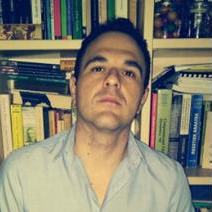Advances in Modelling and Simulation of Deposition and Plasma Etching Processes
A special issue of Coatings (ISSN 2079-6412). This special issue belongs to the section "Plasma Coatings, Surfaces & Interfaces".
Deadline for manuscript submissions: 10 July 2024 | Viewed by 2715
Special Issue Editors
2. Entelos Institute, Larnaca 6059, Cyprus
Interests: from a broad perspective, my research combines different models from multiple scales (PDEs, ballistic, MC/kMC, MD, ab initio) in an effort to understand how the physical/chemical phenomena—including their non-linear character—in engineering processes affect material properties; another pilar of my research is scientific software development in combination with high-performance computing (HPC) in CPU/GPU
Interests: mutliscale modeling and simulation; plasma processing; microfluidic devices; lab on a chip systems
Special Issues, Collections and Topics in MDPI journals
Special Issue Information
Dear Colleagues,
Deposition and plasma etching processes are the cornerstones of the electronic industry. Physical vapor deposition (PVD), chemical vapor deposition (CVD), electrodeposition, and atomic layer deposition (ALD) are extensively used to produce high-quality films and coatings. Additionally, plasma etching is used for pattern transfer, to produce accurate structures at micro/nanoscales and recently at atomic scales (atomic layer etching—ALE), and it is used in surface roughening, to alter surface properties, such as wetting and reflective properties.
Although deposition and plasma etching processes have been established processes for over 30 years, they are continuously studied both experimentally and computationally in order to cover the ever-increasing demands for new materials in nanoelectronics, power electronics, medicine, space industries, and ecology. From the early developments of these processes, computations have offered theoretical tools for gaining a deeper understanding of the processes and the physical/chemical phenomena involved; they have become the means to efficiently design and optimize the processes.
The physical/chemical phenomena taking place in a (deposition or plasma) reactor account for a full range in scale; the models can vary for the same processes, depending on the goal of a scholar’s research—from continuum to ab initio models, or even a combination (multiscale modeling). In addition, as computational power constantly increases, new or older computational practices—especially machine learning and deep learning models—can be used more effectively to produce more reliable and accurate results. Thus, the stage is set for building a better understanding of the processes. That said, new models, computational methodologies, and software are being developed to meet the high demands for new materials and device development.
This Special Issue, entitled “Advances in modeling and simulation of deposition and plasma etching processes”, invites researchers within the field from across the world to publish their latest work. As such, the Special Issue may also be seen as a comprehensive compendium for scholars interested in pursuing computational research in deposition and plasma etching, and as a resource for industries looking for experts in the field.
In particular, the scope of this Special Issue includes—but is not limited to—the following: computational studies concerning any scale or more than one scale (multiscale modeling) in deposition (CVD, PVD, ALD, electrodeposition, plasma, etc.) and etching (ALE, plasma, etc.) reactors; transport phenomena (mass, momentum, energy) and chemical kinetics in the gas phase or on the surface, where deposition or etching takes place. Studies considered for publication in this Special Issue may be based on Monte Carlo/kinetic Monte Carlo, ab initio, continuum, empirical, or machine learning models. Algorithms coupling different scales and applications of HPC techniques are welcome. Additionally, we encourage the submission of papers engaging with a comparison of measurements for the validation of model results and the combination of physical modeling with machine learning models.
Dr. Nikolaos Cheimarios
Dr. George Kokkoris
Guest Editors
Manuscript Submission Information
Manuscripts should be submitted online at www.mdpi.com by registering and logging in to this website. Once you are registered, click here to go to the submission form. Manuscripts can be submitted until the deadline. All submissions that pass pre-check are peer-reviewed. Accepted papers will be published continuously in the journal (as soon as accepted) and will be listed together on the special issue website. Research articles, review articles as well as short communications are invited. For planned papers, a title and short abstract (about 100 words) can be sent to the Editorial Office for announcement on this website.
Submitted manuscripts should not have been published previously, nor be under consideration for publication elsewhere (except conference proceedings papers). All manuscripts are thoroughly refereed through a single-blind peer-review process. A guide for authors and other relevant information for submission of manuscripts is available on the Instructions for Authors page. Coatings is an international peer-reviewed open access monthly journal published by MDPI.
Please visit the Instructions for Authors page before submitting a manuscript. The Article Processing Charge (APC) for publication in this open access journal is 2600 CHF (Swiss Francs). Submitted papers should be well formatted and use good English. Authors may use MDPI's English editing service prior to publication or during author revisions.






